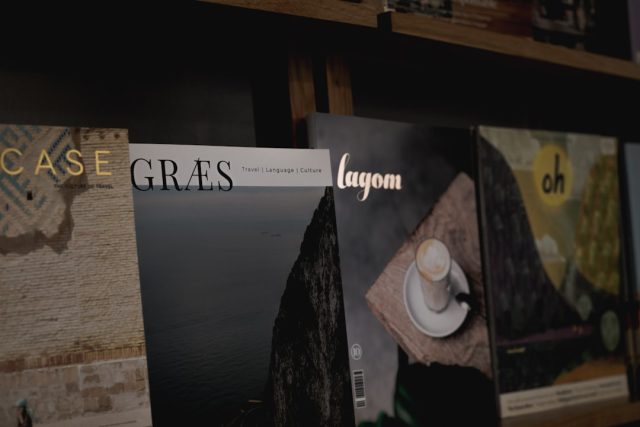Bestsellers hold a unique place in the literary world, often serving as a barometer for public interest and cultural trends. These books, which achieve significant sales figures within a specific timeframe, are not merely popular; they often reflect the zeitgeist of their era. The term “bestseller” can evoke a sense of prestige and desirability, as readers flock to titles that have garnered widespread acclaim or commercial success.
The allure of bestsellers lies not only in their sales numbers but also in the conversations they spark, the themes they explore, and the emotions they evoke. From gripping narratives to enlightening non-fiction, bestsellers encompass a wide array of genres, each resonating with different audiences and tastes. The journey of a book to bestseller status is often complex and multifaceted.
Factors such as marketing strategies, author reputation, and even social media buzz can significantly influence a book’s trajectory. Publishers invest considerable resources into promoting potential bestsellers, employing tactics ranging from book tours to influencer partnerships. Additionally, bestseller lists—such as those compiled by The New York Times or Amazon—play a crucial role in shaping public perception.
These lists not only highlight popular titles but also create a sense of urgency among readers, prompting them to engage with books that are trending. As a result, bestsellers become cultural phenomena, often leading to adaptations in film and television, further amplifying their reach and impact.
Key Takeaways
- Bestsellers are books that have sold a large number of copies and are popular among readers.
- Fiction bestsellers include a wide range of genres such as literary fiction, historical fiction, and romance novels.
- Non-fiction bestsellers cover topics like self-help, memoirs, and true crime, catering to a diverse range of interests.
- Mystery and thriller bestsellers are known for their gripping plots, suspenseful storytelling, and unexpected twists.
- Romance bestsellers are beloved for their heartwarming and passionate love stories, often set in captivating settings.
Fiction Bestsellers
Fiction bestsellers often dominate the literary landscape, captivating readers with imaginative storytelling and compelling characters. These works transport readers to different worlds, allowing them to escape reality while exploring complex themes such as love, loss, and identity. Authors like Colleen Hoover and Taylor Jenkins Reid have recently made waves in the fiction category, crafting narratives that resonate deeply with contemporary audiences.
Their ability to weave relatable experiences into their plots has garnered them a loyal following, propelling their books to the top of bestseller lists. The emotional depth and relatability of these stories often lead to discussions among readers, creating a community around shared experiences and insights. Moreover, fiction bestsellers frequently reflect societal issues and cultural shifts, making them relevant beyond mere entertainment.
For instance, novels that tackle themes of social justice, mental health, or environmental concerns resonate with readers who seek both escapism and reflection on real-world challenges. The popularity of authors like Chimamanda Ngozi Adichie and Celeste Ng illustrates how fiction can serve as a mirror to society, prompting readers to engage with pressing issues through the lens of storytelling. As these narratives unfold, they not only entertain but also educate and inspire change, solidifying their place in the canon of contemporary literature.
Non-Fiction Bestsellers

Non-fiction bestsellers offer readers a wealth of knowledge and insight into various subjects, ranging from self-help to history and politics. These books often serve as guides for personal development or provide critical analyses of current events and societal trends. Authors like Michelle Obama and Malcolm Gladwell have achieved bestseller status by sharing their unique perspectives and experiences, resonating with readers who seek both inspiration and understanding.
The appeal of non-fiction lies in its ability to inform and empower; readers often turn to these works for practical advice or to gain a deeper understanding of complex issues affecting their lives and communities. In recent years, the rise of memoirs and personal narratives has transformed the non-fiction landscape. Readers are increasingly drawn to authentic stories that reflect diverse experiences and backgrounds.
This trend is exemplified by works such as “Becoming” by Michelle Obama and “Educated” by Tara Westover, which not only recount personal journeys but also address broader themes of resilience and identity. These narratives invite readers into the authors’ lives, fostering empathy and connection while encouraging reflection on their own experiences. As non-fiction continues to evolve, it remains a vital genre that informs public discourse and shapes cultural conversations.
Mystery and Thriller Bestsellers
| Rank | Title | Author | Weeks on Bestseller List |
|---|---|---|---|
| 1 | The Silent Patient | Alex Michaelides | 30 |
| 2 | The Girl with the Dragon Tattoo | Stieg Larsson | 45 |
| 3 | Gone Girl | Gillian Flynn | 60 |
| 4 | The Da Vinci Code | Dan Brown | 75 |
| 5 | The Girl on the Train | Paula Hawkins | 40 |
The mystery and thriller genre captivates readers with its intricate plots, unexpected twists, and psychological depth. Bestselling authors like Gillian Flynn and Harlan Coben have mastered the art of suspense, crafting narratives that keep readers on the edge of their seats. These books often delve into the darker aspects of human nature, exploring themes of betrayal, obsession, and moral ambiguity.
The thrill of uncovering secrets and piecing together clues creates an engaging reading experience that appeals to those who enjoy intellectual challenges alongside their entertainment. Moreover, the popularity of mystery and thriller bestsellers has led to a resurgence in interest in classic whodunits as well as contemporary psychological thrillers. Readers are drawn to stories that not only entertain but also provoke thought about justice, morality, and the human psyche.
The genre’s ability to reflect societal fears—such as crime rates or personal safety—adds another layer of relevance to these narratives. As authors experiment with narrative structures and character development, the mystery and thriller genre continues to evolve, ensuring its place on bestseller lists for years to come.
Romance Bestsellers
Romance bestsellers have long been a staple in the literary world, enchanting readers with tales of love, passion, and emotional connection. This genre encompasses a wide range of subgenres—from contemporary romance to historical fiction—allowing for diverse storytelling that appeals to various tastes. Authors like Nora Roberts and Jasmine Guillory have garnered immense popularity by crafting relatable characters and heartwarming plots that resonate with readers seeking both escapism and emotional fulfillment.
The universal themes of love and relationships make romance novels particularly appealing; they offer readers a chance to explore their own desires and fantasies through the lens of fictional characters. In recent years, the romance genre has seen a significant evolution, embracing inclusivity and diversity in its narratives. Readers are increasingly seeking stories that reflect a broader spectrum of experiences, including LGBTQ+ relationships and multicultural perspectives.
This shift has led to the emergence of new voices within the genre, enriching the landscape with fresh ideas and perspectives. As romance bestsellers continue to capture hearts worldwide, they not only entertain but also challenge traditional notions of love and relationships, paving the way for more inclusive storytelling.
Science Fiction and Fantasy Bestsellers

Science fiction and fantasy bestsellers transport readers to imaginative realms filled with extraordinary possibilities. These genres allow authors like Brandon Sanderson and N.K. Jemisin to explore complex themes such as power dynamics, societal structures, and existential questions through fantastical narratives.
The allure of science fiction lies in its ability to speculate about the future while addressing contemporary issues; it invites readers to consider what could be while reflecting on what is. Similarly, fantasy offers an escape into worlds where magic exists alongside moral dilemmas, providing a rich tapestry for storytelling that captivates audiences. The rise of diverse voices within science fiction and fantasy has further enriched these genres in recent years.
Authors from various backgrounds are bringing fresh perspectives to traditional tropes, challenging conventions while expanding the boundaries of imagination. Works like “The Fifth Season” by N.K. Jemisin not only entertain but also provoke thought about race, class, and environmentalism within fantastical settings.
As these genres continue to evolve, they remain vital spaces for exploring human experiences through imaginative storytelling that resonates with readers across generations.
Young Adult Bestsellers
Young adult (YA) bestsellers have emerged as a powerful force in contemporary literature, captivating both teen readers and adults alike with their relatable themes and engaging narratives. This genre encompasses a wide range of topics—from coming-of-age stories to dystopian adventures—allowing young readers to explore complex emotions while navigating their own identities. Authors like John Green and Sarah J.
Maas have achieved remarkable success by crafting characters that resonate deeply with their audience, addressing issues such as mental health, friendship, love, and societal expectations. The appeal of YA bestsellers lies not only in their relatable characters but also in their ability to tackle important social issues relevant to today’s youth. Many YA novels address topics such as bullying, sexuality, mental health struggles, and family dynamics in ways that encourage empathy and understanding among readers.
This focus on authenticity has led to a growing demand for diverse voices within the genre; readers are increasingly seeking stories that reflect their own experiences or those of others from different backgrounds. As YA literature continues to evolve, it remains an essential platform for young people to see themselves represented while grappling with the complexities of adolescence.
Conclusion and Where to Find Bestsellers
In conclusion, bestsellers encompass a rich tapestry of genres that reflect the diverse interests and experiences of readers worldwide. From gripping fiction to enlightening non-fiction, each category offers unique insights into human nature while providing entertainment and escapism. The popularity of these books often sparks conversations about societal issues, personal growth, and cultural trends—making them more than just commercial successes; they become integral parts of our collective narrative.
For those looking to discover current bestsellers or explore timeless classics, numerous resources are available both online and in print. Websites like Amazon or Goodreads provide up-to-date lists based on sales figures and reader reviews, while local bookstores often feature curated selections highlighting popular titles within various genres. Additionally, libraries frequently host book clubs or reading programs centered around bestsellers—creating opportunities for community engagement through literature.
Whether you’re seeking your next great read or simply want to stay informed about literary trends, the world of bestsellers offers endless possibilities for exploration and enjoyment.
If you’re interested in learning more about the trends and factors that influence bestsellers, you might find the article on how books become bestsellers quite enlightening. This article delves into the marketing strategies, reader demographics, and critical acclaim that can propel a book to the top of the sales charts. It’s a must-read for anyone curious about the publishing industry or looking to understand the dynamics behind bestselling books.
FAQs
What are bestsellers?
Bestsellers are books, albums, or other products that are extremely popular and have sold a large number of copies within a specific period of time. They are often ranked on bestseller lists based on their sales figures.
How are bestsellers determined?
Bestsellers are typically determined by tracking sales figures from various retailers and compiling them into bestseller lists. These lists are often published by newspapers, magazines, or online platforms and can be categorized by genre or format.
What makes a book a bestseller?
A book becomes a bestseller when it sells a large number of copies within a short period of time. This can be influenced by factors such as marketing, word-of-mouth recommendations, and media coverage.
Do bestsellers guarantee quality?
While bestsellers are popular and have sold well, they do not necessarily guarantee quality. The popularity of a bestseller can be influenced by factors other than the content itself, such as marketing campaigns or celebrity endorsements.
Are bestsellers always fiction books?
No, bestsellers can include a wide range of genres and formats, including fiction, non-fiction, self-help, cookbooks, and children’s books. Bestsellers can also include albums, movies, and other products that have sold a large number of copies.



MOST COMMENTED
Book genres
Author Interviews: Insights from Writing Pros
Literary criticism
Top Book Reviews: Engaging Reads for Every Reader
Book genres
Exploring Popular Book Genres: From Mystery to Romance
Literary criticism
Bestsellers: The Top Picks for Your Next Read
Book genres
It Ends With Us: A Gripping Book Review
Book recommendations
Captivating Tale: Book Review
Literary criticism
It Ends With Us Review: A Powerful and Emotional Read